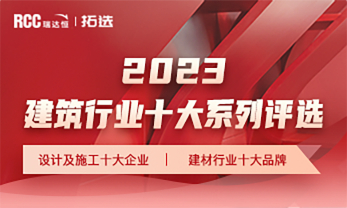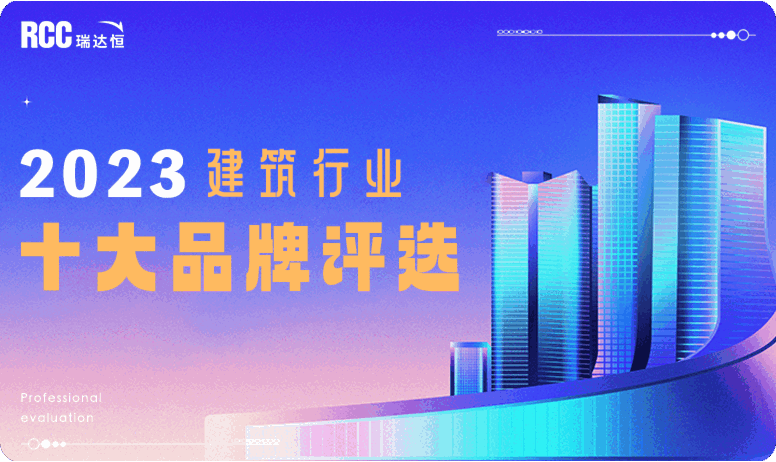第三名:水上移动农场
来源:网友chen坦然投稿 2014-07-04
三、鄱阳湖环境存在的问题 The problems of poyang lake environment
由于人口、经济、资源的多重压力,鄱阳湖地区的生态环境负荷越来越严重,环境日益恶化。比如,水质污染、水土流失、水旱灾害等各种问题。
1)水旱灾害
由于水土流失及围湖造田等不合理的开发活动,使鄱阳湖的湖泊面积大大减少,蓄洪能力降低,导致鄱阳湖区洪涝灾害频繁发生;鄱阳湖区位于亚热带湿润季风气候区,降水的年际差异和季节变化均很大,不仅洪涝灾害频繁出现,干旱灾害也较严重。湖区灾害频度和灾害程度近年加大。特大水灾一般十年发生一次,20世纪90年代以来一般平均3.3 年发生一次;特大旱灾平均每6.4年发生一次,90年代以来一般平均4年发生一次。
2)水质污染
鄱阳湖因吞吐型湖泊特点,水位涨落受江西五大水系及长江来水的双重影响,丰枯水位面积相关极大,这种自然地理特征直接影响着水体质量。由于枯水期水量仅为丰水期的1%-2%,而污染物排放无太大变化,此时水体水质最差。丰水期正值农耕时期,化肥农药的大量施用,使得大量有机物随水土流失和地表径流进入鄱阳湖,此时污染排放负荷最重。3)水土流失据遥感普查,江西是南方水土流失最严重的省份之一,水土流失主要分布于鄱阳湖水系“五河”流域中、上游及鄱阳湖滨湖地区,现有水土流失面积336.12×105km,占全省水土流失面积的95.5%。20世纪50年代,全省水土流失面积为110×105km ,到90年代水土流失面积扩大到460X105km ,增加了3倍多。水土流失造成大量泥沙流入江河湖库,致使全省各江河湖库大都出现了严重淤积现象。
Due to the multiple pressures of population, economy, resources, ecological environment of poyang lake region load more and more serious, the deterioration of environment. For example, water pollution, soil erosion, floods and other problems.
1) The floods
Due to soil and water loss, and carry out the unreasonable development activities, greatly reduce the poyang lake area, flood storage capacity is reduced, the flood disaster occurs frequently lead to PoYangHuOu happen; PoYangHuOu is located in the subtropical humid monsoon climate zone, precipitation interannual difference and seasonal change is very big, not only flooding disasters occur frequently, drought disaster is more serious. The lake district disaster frequency and disaster degree has increased in recent years. Devastating floods generally ten years, since the 1990 s, general average one every 3.3 years; Drought occurs once every 6.4 years on average, since the 90 s average once every four years on average. 2) The water pollution
Poyang lake for throughput characteristics of lakes, water level fluctuation by jiangxi five river and the Yangtze river water, as well as the influence of the related greatly abundant low water area, the natural geographical characteristics directly affect water quality. Due to its water, water is only 1% to 2%, and pollutant emissions do not have too big change, the water quality is the worst. The plentiful farming period, the amount of chemical fertilizers application, make a lot of organic matter with soil and water loss and surface runoff into the poyang lake, the heaviest pollution load.
3) According to remote sensing survey of soil and water loss in jiangxi province is the south, one of the most serious soil erosion, soil erosion is mainly distributed in the poyang lake water system "area" in the upper and middle reaches and poyang lake basin binhu region, the existing soil erosion area of 336.12 x 105 km, accounting for 95.5% of soil and water erosion area. 5 o s of the 20th century, the province of soil and water loss area of 110 X 105 km, the area of soil and water loss in the 90 s to expand to 460 X 105 km, was increased by more than three times. Soil and water loss caused heavy sediment flowing into rivers and lakes library, caused the entire province all the rivers and lakes library mostly created serious silting phenomenon.
2设计内容说明
2.1如何与城市立体农场概念呼应,立体农场与建筑结合的方法与策略
为了减轻城市中大厦林立,消除了重型机械和农业设备的大量使用,本案设想将城市立体农场建在水中,灌溉水来自江水,水的循环使用和有效利用可大大缓解水危机。由于立体农场位于城市中心地段的水域,消除了运输及相关的环境影响。各类农作物将得到密切监测,并得到准确的生长条件,从而提高产量。绿色高科技工作将成为种植人员,研究人员,技术人员,供应商和更多人的工作。为了建立这样一个高科技农场,大量的可持续技术将得到综合利用。这些技术目前都在使用,但不是所有的技术都被纳入一个站点综合利用。雨水将被处理用于灌溉,再与水回收系统结合起来。每种作物的环境条件将受到严格控制,使作物得到最大限度地生长,同时尽量减少水分和养分的使用。来自作物的废物或制成堆肥,或者与动物废料合并,作为建筑物内的燃料。能源将来自像太阳和风能等可再生资源,而节能建筑技术将减少能源需求,理想的建筑能够创造出比其所需的更多的能量。立体农场内的农作物生产一年四季都可进行。农场内将种植各种蔬菜、水果和谷物,奶制品、家禽、鱼和猪也一应俱全。
2.2如何结合场地,场地氛围与场景塑造
江西自古以来便是鱼米之乡,水网众多,水产丰富,因此便要结合赣江-鄱阳湖水系来设置立体农场。于是,我们想到了在水面上建造立体农场,并可在赣江自由移动,这样便高效契合了地形。同时,立体农场也作为城市地标,发挥了景观的作用,丰富了城市的天际线。
2.3如何解决建筑各功能模块之间的组织关系,并妥善处理建筑与环境的关系
各功能模块根据高度进行配置,从向下依次为大板瓜子、水稻、芝麻 、生姜百合、蔓荆子、葛藤、藜蒿、禽类养殖、山药、水产养殖。水下部分为污水处理系统,末端装有涡轮,以提供移动农场的动力。建筑与环境协调发展,农场不仅生产农产品,还产生能源,向外界输送电力以缓解城市用电紧张。
2 design content
2.1 how with the concept of urban vertical farm echo, vertical farms and construction method and strategy (the key to illustrate the efficiency of the vertical farm the cities)
In order to reduce building standing in the city, and eliminates the use of heavy machinery and agricultural equipment, this case envisaged urban vertical farm built in the water, irrigation water from the river, the water cycle use and efficient use can greatly alleviate the water crisis. Due to the vertical farm, located in the center of the city of waters, eliminates the transportation and related environmental impact. All kinds of crops will be closely monitored, and get the exact conditions, thus improve the production. Green high-tech jobs will be planting, researchers, technical staff, suppliers and more work. In order to establish such a high-tech farm, a lot of sustainable technology will get comprehensive utilization. These technologies are currently in use, but not all technology has been incorporated into the comprehensive utilization of a site. The rain will be processed for irrigation, and then combined with the water recycling system. Each crop conditions will be subject to strict control, to maximize the growth of crops, and minimize the use of water and nutrients. From crop waste or compost, or merged with animal waste, fuel for buildings. Energy will come from like the sun and wind power and other renewable resources, and energy-saving building technique will reduce energy demand, ideal building to create more energy than it needs. Inside the vertical farm crop production can be carried out all the year round. Within the farm will be planted all kinds of vegetables, fruits and grains, dairy products, poultry, fish and pork also.
2.2 how to combine site, site atmosphere and scene model
Jiangxi since ancient times is the land of fish and rice, numerous canals, aquatic products rich, so he should combine the gan - poyang lake water system to set the vertical farm. So, we think of the building on the surface of the vertical farm, and can move freely in the gan, thus efficiently with the terrain. At the same time, the vertical farm is a landmark of the city, giving play to the role of the landscape and enrich the city's skyline.
2.3 how to solve the construction organization relation between each function module, and properly handle the relationship between architecture and environment
Each function module configuration, according to height from downward in the order large plate melon seeds, rice, sesame seed, ginger lily, fructus viticis, kudzu, quinoa artemisia, poultry breeding, yam, aquaculture. Underwater for sewage treatment system, end is equipped with turbine, in order to provide mobile farm. Architecture and the environment coordinated development, not only the production of agricultural products, farm also produce energy, sending electricity to the outside world in order to relieve the strain on the city electricity.
3经济技术指标 Economic and technical indicators
3.1.总用地面积 With a total land area of:鄱阳湖水域Poyang lake waters:44km2,
3.2.总建筑面积A total construction area of:20000m2
3.3.建筑层数Construction layer:10层 10 layers
3.4.建筑功能面积分配 Building function area allocation
农业生产区Agricultural production:12000m2
能源生产区Energy production:3000m2
净化环境区Environment purification area:2000m2
办公区Office area:1000m2
休闲区 Recreational area:2000m2
评委点评:
《水上移动农场》将具有创意的趣味性、创新性和技术性巧妙融合。设计师们通过精彩的手绘和艺术渲染对概念本身进行了完美的视觉呈现。
发表评论
最新评论

 投稿
投稿





